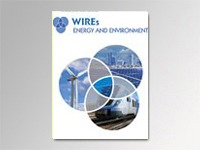
Industrial Energy Use and Carbon Emissions Reduction: A UK Perspective
Geoff Hammond and Jonathan Norman have published a new paper in WIREs Energy and Environment. Read the full paper here: Industrial energy use and carbon emissions reduction
Abstract
Progress in reducing industrial energy demand and carbon dioxide (CO2) emissions is evaluated with a focus is on the situation in the United Kingdom (UK), although the lessons learned are applicable across much of the industrialized world. The UK industrial sector is complex, because it may be viewed as consisting of some 350 separate combinations of subsectors, devices and technologies.
Various energy analysis and carbon accounting techniques applicable to industry are described and assessed. The contributions of the energy-intensive (EI) and nonenergy-intensive (NEI) industrial subsectors over recent decades are evaluated with the aid of decomposition analysis. An observed drop in aggregate energy intensity over this timescale was driven by different effects: energy efficiency improvements; structural change; and fuel switching. Finally, detailed case studies drawn from the Cement subsector and that associated with Food and Drink are examined; representing the EI and NEI subsectors, respectively.
Currently available technologies will lead to further, short-term energy and CO2 emissions savings in manufacturing, but the prospects for the commercial exploitation of innovative technologies by mid-21st century are far more speculative. There are a number of nontechnological barriers to the take-up of such technologies going forward. Consequently, the transition pathways to a low carbon future in UK industry by 2050 will exhibit large uncertainties. The attainment of significant falls in carbon emissions over this period depends critically on the adoption of a limited number of key technologies [e.g., carbon capture and storage (CCS), energy efficiency techniques, and bioenergy], alongside a decarbonization of the electricity supply.